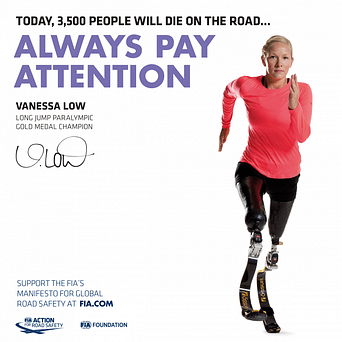
Walking without awareness and what we can learn from it
Think about it, almost every journey comprises an element of walking. Many of our walking trips are part of journeys consisting of at least one other form of transport (Sauter, Pharoah, Tight, Martinson, & Wedderburn, 2016). Examples of daily walking routines are a walk from home to the public transport station, or a walk from the car park to the workplace and back.
Walking is arguably the most ubiquitous mode of getting around in everyday life and is therefore an act well-practised. For repeatedly-practised acts it is known that they become skilled behaviour which can be performed without much cognitive deliberation (Rasmussen, 1983).
Continuing this line of reasoning to the ubiquitous act of walking would imply that walking may be performed largely automatically. As such, performing the act of walking as an automated behaviour would require little to no attention. This appears to be supported by pedestrians’ behaviour; them being commonly engaged in other activities that do require attention, such as talking to a companion or using a mobile phone.
If attention for walking is indeed decreased, does it pose a road safety issue? Do pedestrians for example bump into obstacles on their path? The answer depends on whether awareness of our surroundings is affected. In traffic, awareness is generally understood as a prerequisite to understand where we are, in which direction to move, and how to negotiate obstacles in order to safely arrive at our destination (Endsley, 1995). Many road safety experts believe that maintaining a sufficient level of awareness about the environment is regarded of utmost importance for road safety.
The importance of paying attention to a task that requires little attention seems paradoxical. This led us to question whether pedestrians are sufficiently aware of their surroundings. Can pedestrians successfully negotiate and recall obstacles in a city? And do common walking practices, such as talking to a companion, affect awareness of obstacles and, or, avoidance behaviour?
To find out, we placed an obstacle, i.e. a signboard, on a pavement in the city centre of Utrecht, the Netherlands (as depicted in the featured image). To learn if and how soon pedestrians respond to an obstacle on their path, we measured how far away from the signboard pedestrians moved to avoid it. After the signboard was passed, pedestrians were approached by a researcher. If they consented, we asked them how familiar they were with the street, what they were thinking of, and confirmed what they were doing (such as talking with a companion or using a mobile phone). Finally, to assess awareness, we asked them to describe the area they had just passed. If they didn’t mention the signboard, participants were explicitly asked whether they had passed a signboard on the pavement and if so, what it said. Awareness was defined as the ability to report what had been seen, similar to e.g. Sandberg, Timmermans, Overgaard, and Cleeremans (2010) and Spering and Carrasco (2015).
In this study 234 pedestrians participated. More than half of them (53.8%) indicated that – even after looking at the signboard’s back – they had not seen the signboard before. All of them showed signs of surprise (such as exclaiming “I really have not seen that”), disbelief or even discomfort with having passed a signboard without being able to recall it. Some participants tried to reduce this cognitive dissonance by creating storylines explaining why they had not seen the signboard. An example of this is the participant who (inaccurately!) recalled not having passed the signboard as he had just crossed the street. Although these participants were unaware of the signboard none of them had bumped into it. These participants were considered to have been acting without awareness. Mind wandering, being engaged in secondary tasks such as talking with a companion or using a mobile phone, and being familiar with the street, did not affect awareness nor avoidance behaviour.
In conclusion, we found walking without awareness to be very common in pedestrians. Yet, regarding obstacle avoidance, we found no evidence that it increased the road safety risk.
We argue that walking is such a well-rehearsed, universal mode of transport that it can be performed largely automatically to the point that one can even avoid obstacles on a city centre pavement with little to no awareness of them. Therefore it is questionable that it is necessary or even feasible to request pedestrians to be constantly paying attention when walking, which is still common practice in various road safety campaigns, like in the below example (Image from the current #3500LIVES FIA – JCDecaux campaign dedicated to road safety. Source: FIA).

According to our recent study, the necessity and feasibility of this ad’s request should be questioned.
Of note is that none of the unaware participants had bumped into the signboard! This means that the signboard’s presence has indeed been sufficiently processed to enable the participants to successfully negotiate the obstacle. Thus, awareness is not a prerequisite to avoid obstacles.
In other words, the lack of a verbal confirmation of an object’s presence does not mean that the object has not been taken into account. Similar to our previous study (Harms, Dijksterhuis, Jelijs, De Waard, & Brookhuis, 2019) and Fisher (1992), the current study provides further evidence that task-related objects may indeed guide someone’s behaviour without this person becoming aware of said objects. This is important for policy makers as well as researchers in traffic: merely asking what people have seen is insufficient when in fact it is the actual behaviour that counts.
This blog is based on the following publication: Harms, I. M., van Dijken, J. H., Brookhuis, K. A., & de Waard, D. (2019). Walking without awareness. Frontiers in Psychology, 10:1846, 1-12. doi:10.3389/fpsyg.2019.01846
Featured image was taken by Ilse Harms herself.
In-text references:
Endsley, M. R. (1995). Toward a theory of situation awareness in dynamic systems. Human Factors, 37(1), 32-64. doi:10.1518/001872095779049543
Fisher, J. (1992). Testing the effect of road traffic signs’ informational value on driver behavior. Human Factors, 34(2), 231-237. doi:10.1177/001872089203400208
Harms, I. M., Dijksterhuis, C., Jelijs, B., De Waard, D., & Brookhuis, K. A. (2019). Don’t shoot the messenger: Traffic-irrelevant messages on variable message signs (VMSs) might not interfere with traffic management. Transportation Research Part F: Traffic Psychology and Behaviour, 65, 564-575. doi:10.1016/j.trf.2018.09.011
Rasmussen, J. (1983). Skills, rules, and knowledge; signals, signs, and symbols, and other distinctions in human performance models. IEEE Transactions on Systems, Man and Cybernetics, SMC-13(3), 257-266. doi:10.1109/TSMC.1983.6313160
Sandberg, K., Timmermans, B., Overgaard, M., & Cleeremans, A. (2010). Measuring consciousness: Is one measure better than the other? Consciousness and Cognition, 19(4), 1069-1078. doi:10.1016/j.concog.2009.12.013
Sauter, D., Pharoah, T., Tight, M., Martinson, R., & Wedderburn, M. (2016). International walking data standard. treatment of walking in travel surveys: Internationally standardized monitoring methods of walking and public space. (). Vienna, Austria: Measuring Walking – Walk21.
Spering, M., & Carrasco, M. (2015). Acting without seeing eye movements reveal visual processing without awareness. Trends in Neurosciences, 38(4), 247-258. doi:10.1016/j.tins.2015.02.002



